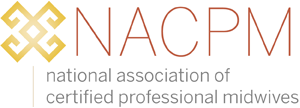The MANA Stats Fetal, Neonatal Mortality Review (FNMR) Project: Preliminary Findings and Implications for Practice
1.5 MEAC CEUs Available
February 21, 2018
Please sign up here if you wish to receive Continuing Education Credits for webinars. Please contact us if you have questions or suggestions for future webinars.
https://nacpm.org/wp-content/uploads/2018/03/Cheyney-powerpoint-slides.pdf
This webinar qualifies for the NARM Category 3 Bridge Certificate
This webinar was not audio-recorded, and all of the findings that were presented verbally are not included on the slides. This is because the research is unpublished. Sharing information widely that has not yet been published or is actively embargoed by a journal jeopardizes publication. We ask that you do not share or post any of these slides to social media.
In this webinar, Dr. Cheyney described findings from a study designed to examine all fetal and neonatal deaths recorded in MANA Stats between 2004 and 2016. Using a modified Fetal-Infant-Mortality-Review (FIMR) approach, midwife-researchers conducted detailed interviews with midwives for all non-miscarriage fetal and neonatal deaths in the sample. The objective was to clarify the gestational age at which the death occurred and to properly classify late miscarriages. The reviewers also collected qualitative on when, how, and why the death occurred, as well as data on whether an autopsy was conducted, and the official cause of death assigned via medical examiner or coroner’s report.
Using the three delays model as proposed by Thaddeus and Maine (1994), Dr. Cheyney discussed rates of intrapartum and neonatal death in a large sample of more than 50,000 planned, midwife-led, community births (home and birth center) in the United States. She also provided an in-depth thematic analysis of the primary contributors to mortality in the sample. Findings indicate that while the overall rate of death is low, there are three major contributors to fetal and neonatal mortality, including:
1) delays in the decision to transfer to the hospital due to failure to identify early signs of fetal distress and/or hesitancy to transport due to fear of “punitive cesarean section”;
2) delays in reaching care due to distance from the hospital or fractured collaborations with Emergency Medical Services; and
3) delays in receiving care once arriving at the hospital due to fear, poor inter-professional communication, blaming and shaming.
Melissa Cheyney, Ph.d, CPM, LDM, is Associate Professor of Clinical Medical Anthropology at Oregon State University (OSU) with additional appointments in Public Health and Women Gender and Sexuality Studies. She is also a Licensed Midwife in active practice, and the Chair of the Division of Research for the Midwives Alliance of North America where she directs the MANA Statistics Project. Dr. Cheyney currently directs the International Reproductive Health Laboratory at Oregon State University where she serves as the primary investigator more than 20 maternal and infant health-related research projects in nine countries. She is the author of an ethnography entitled Born at Home (2010, Wadsworth Press) along with dozens of peer-reviewed articles that examine the cultural beliefs and clinical outcomes associated with midwife-led birth at home in the United States. Dr. Cheyney is an award-winning teacher, and in 2014 was given Oregon State University’s prestigious Scholarship Impact Award for her work in the International Reproductive Health Laboratory and with the MANA Statistics Project. She is the mother of a daughter born at home on International Day of the Midwife in 2009.

